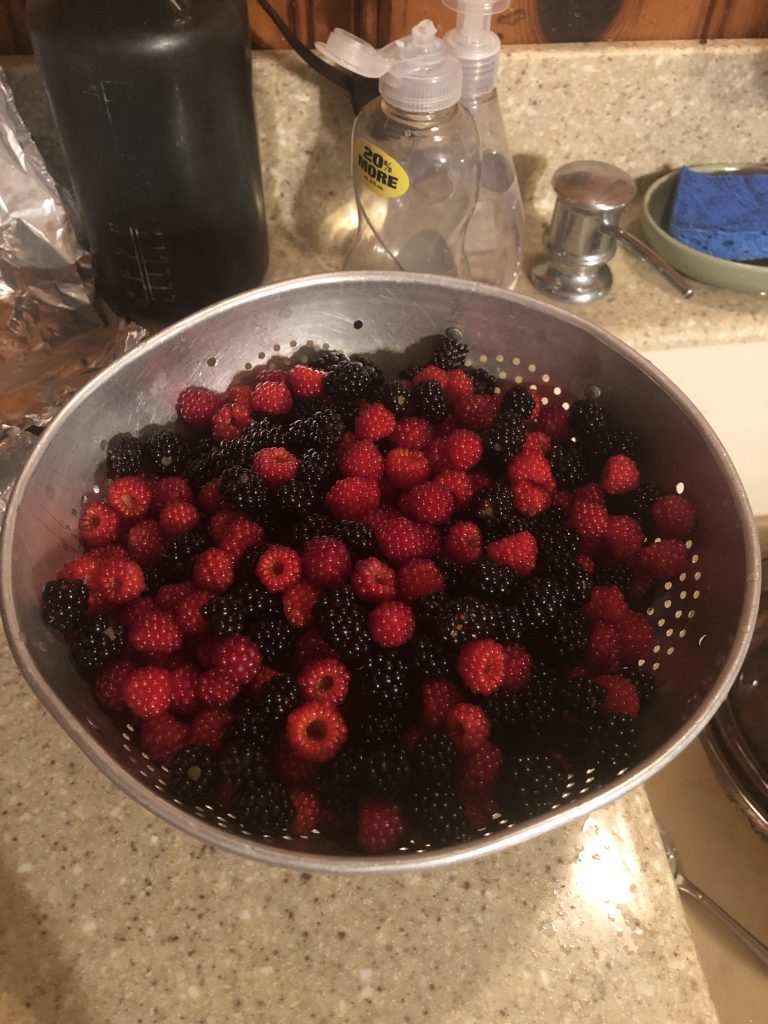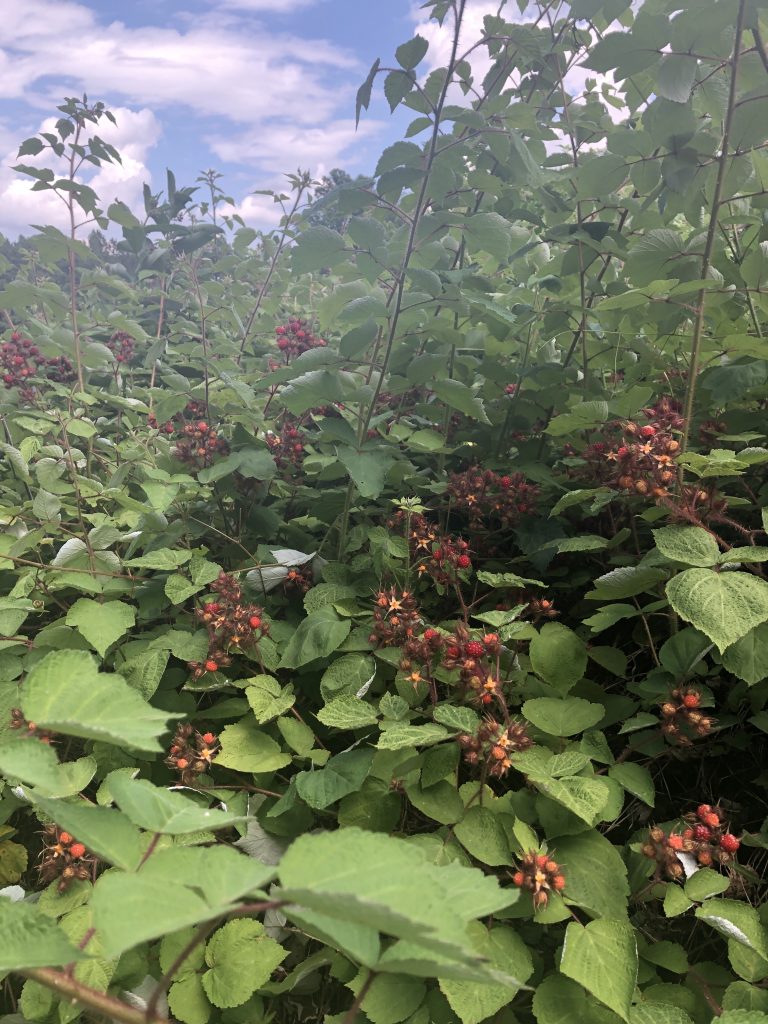It’s berry season! I look forward to it every year. I have access to ACRES of berries, and I take advantage of my good fortune. Picking begins around the 4th of July and goes until I run out of time or berries. The latter of which never happens.
My berry patches are disbursed over a large area, so I need to be strategic since time is the limiting factor in my quest to fill as many buckets as possible. Just like every other critter on the landscape, I need to forage efficiently.
In our endless quest to explain everything, ecologists developed a theory to explain how animals would make decisions when foraging. From that quest, Optimal Foraging Theory (OFT) was born. We’ve talked a little bit about it in the context of search image.
According to OFT, an animal should adopt the foraging strategy that provides the most benefit (energy) for the lowest cost. For example, do you expend a lot of time and energy to planting and caring for a garden or are you better off collecting wild berries that provide less energy but also take a lot less time and energy?
It’s all about return on investment. Animals should be angling for the biggest return. There is a whole field of study dedicated to OFT. As you can imagine, there are many factors that influence the “optimum” way to obtain food – like food value, search time, and handling time.
But what does it look like in the real world? When critters are presented with a cornucopia of berries…I mean food…how do the tenets of OFT play out?
Take, for example, the overworked mountain chickadee parent. Their one goal is to bring as much food as possible in as little time as possible to those noisy, never-full nestlings. For them, the deciding factor is foraging time. They visited the same foraging location on consecutive flights not because of increased frequency of capture of the same prey type or quantity of prey but because it significantly decreased foraging time. Combine that with selecting the same prey type (there’s that search image again!) in the same location and it was like compound interest on the decrease in foraging time. Prey that is readily obtained in large numbers, even if they are small, were preferred.
In my quest for berries I am one with the mountain chickadee parent. After visiting 4 different berry patches, I concluded that only one was worthy as a foraging location. While all had berries, foraging time was substantially reduced by repeatedly visiting just one.
Does foraging time always trump other factors? As they say, there’s more than one way to skin a cat even when you are trying to optimize.
So now we go from chickadees to finches – and not just any finches but Darwin’s ground finches in the Galapagos. If you don’t know the story of Darwin’s finches, check out The Beak of the Finch: A Story of Evolution in Our Time. It’s an amazing book.
There are many different sizes and shapes of bills on finches in the Galapagos. Researchers looked at handling efficiency of seed types and patch profitability. Obviously, birds with bigger bills could handle larger seeds. However, patch profitability was a big factor in seed choice. Small seeds with lower energy returns were highly profitable if they were at high density within a patch.
Optimal Foraging Theory says that finches should become less selective of patches (seed clusters) as overall food availability declines. With less food around, more options need to be added to the menu and diets should become more generalized.
But the finches were not big fans of OFT.
It turns out OFT fails when food is superabundant and when scarce. When food is abundant, there is no need to be optimal about anything – patches and seed types don’t matter because any patch or seed type can provide adequate nutrition. When food is scarce, finches don’t prefer certain seed types or patches because a limited menu doesn’t provide much choice.
Why spend time being optimal when adequate will more than suffice?
I am one with Darwin’s finches too. At the height of berry season, I go a bit mad. Faced with berries in every direction, my attention is diverted everywhere I look. There are so many I flit from one cluster to the next. Overwhelmed, there is no need to be choosy or methodical.
It appears that deer agree with me and the finches. Given the breadth of a deer’s diet, deer are satisfied with a range of “good” foraging strategies rather than an “optimal” one.
Why am I even talking about foraging – optimal or otherwise? Deer basically eat habitat. To understand the interactions between deer and their habitat, you need to understand diet selection.
It is obvious that OFT cannot fully explain the choices that animals make when they head out for a meal. As we all know, ecology is messy and complicated. Deer must absorb, translate, and apply a plethora of information in real time. It’s not going to be textbook.
But OFT has shown us the importance of things like search and handling times. The value of a food item is contingent upon many factors. It’s not just about the number of calories in an acorn or a maple bud.
Our forests play a role in determining diet. We’ve seen how soil chemistry affect plant communities. That affects deer diet. And deer diet can affect plant communities. It’s a crazy circular relationship.
Berry picking is not the only reason for my madness.
-Jeannine Fleegle
Wildlife Biologist
PGC Deer and Elk Section

